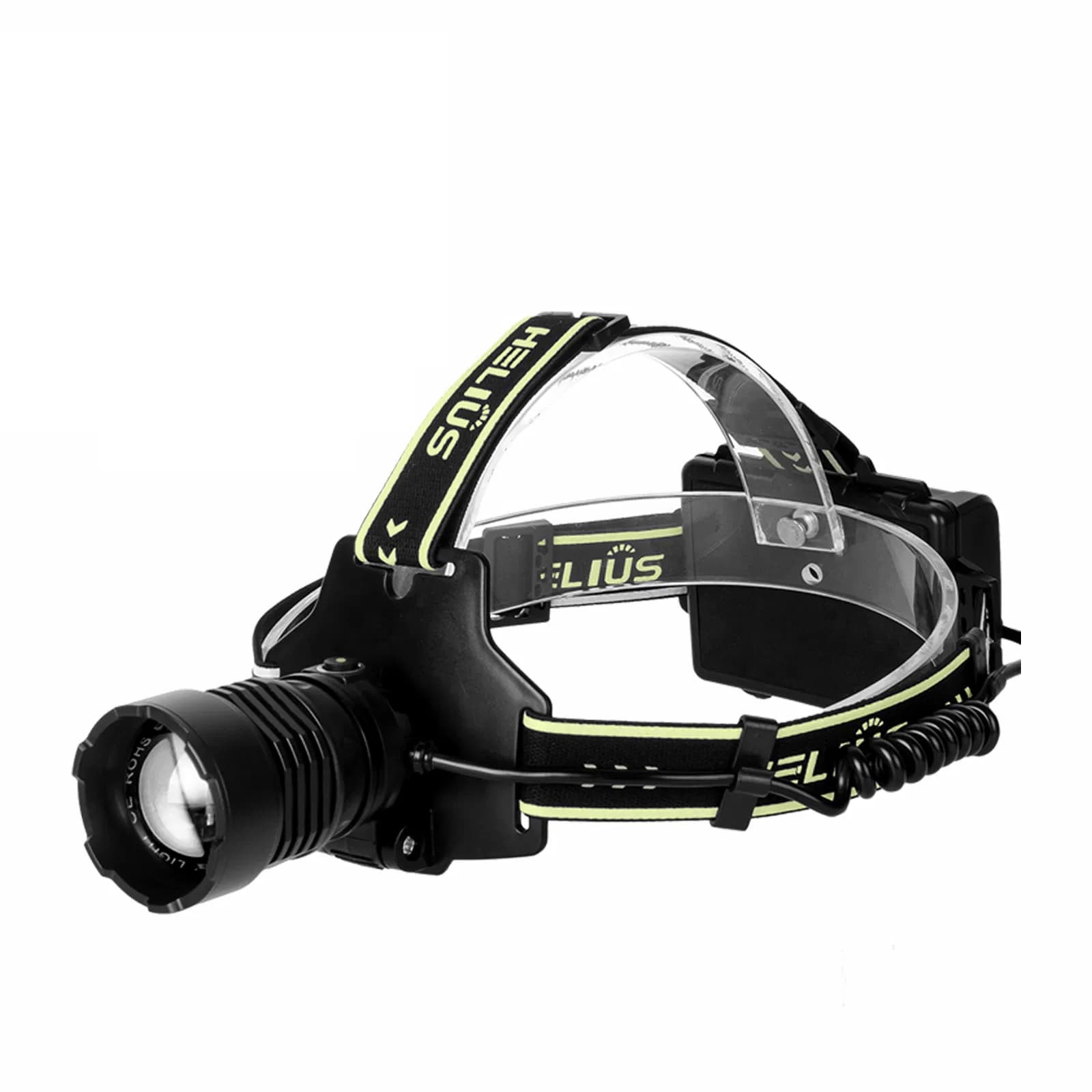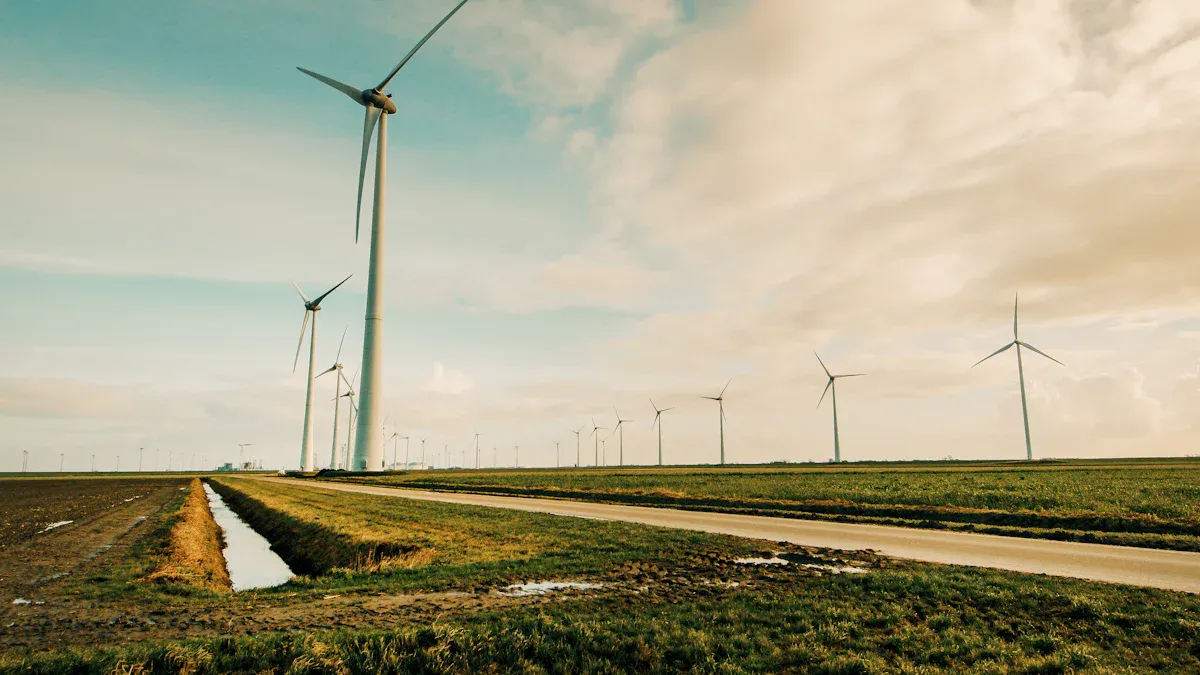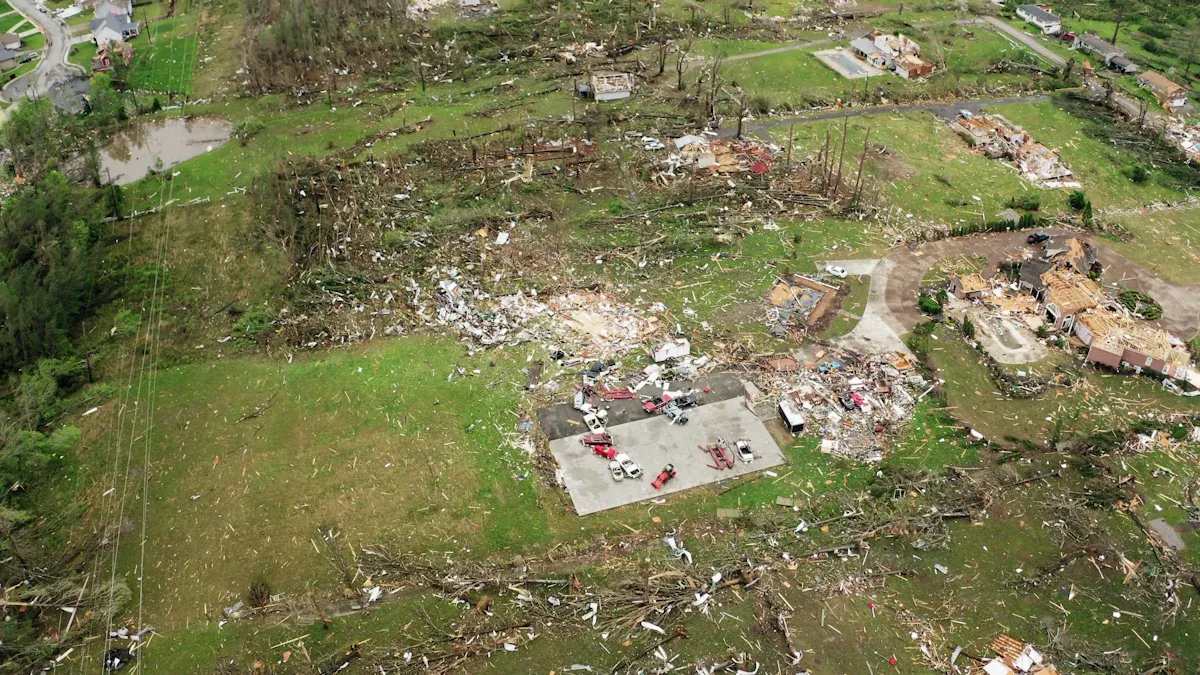How the 2025 Power Outage Changed Emergency Preparedness in Europe

The 2025 European power outage served as a significant warning. It disrupted normal life and highlighted vulnerabilities in emergency planning. For instance, Germany typically experienced less than 13 minutes of power loss annually since 2014. However, during the 2025 European power outage, residents endured hours without electricity. By 2022, only 38% of households were equipped with emergency kits, underscoring the necessity for better preparedness. Basic tools, such as flashlights, proved invaluable during the blackout, helping families remain safe and composed amid uncertainty. Being well-equipped is essential for safety when the power goes out.
Key Takeaways
The 2025 power outage showed big problems in Europe's power grid. It proved we need stronger systems to stop future blackouts.
Before the outage, only 38% of homes had emergency kits. Having a kit with food, water, and flashlights is very important for staying safe.
Helping each other in the community was very important. Neighbors working together made it easier to recover during hard times.
Buying good flashlights and backup power can keep you safer. Pick strong, waterproof ones with batteries that last a long time.
Knowing what’s happening during emergencies is very important. Use alerts and have tools ready to stay connected with your family.
The Impact of the 2025 European Power Outage

Challenges Faced by Households
The 2025 power outage caused major problems across Europe. Millions of people were left without electricity for hours. Many families were unprepared and struggled without heat, light, or communication. In Spain and Portugal, some areas had no power for over ten hours. Families without emergency supplies were especially at risk during this time.
The blackout also caused huge financial losses. It cost about €1.6 billion, hurting incomes and daily life. Sadly, at least seven people in Spain lost their lives. This shows how dangerous such events can be. Imagine how hard it was for families without tools or plans to handle the situation.
Strain on Government and Infrastructure
The outage started at 12:32 p.m. and spread quickly. Governments worked hard to fix the problem fast. Hospitals and transport systems were the first to get power back. Full recovery took six to ten hours. The crisis showed weak spots in the power grid. Spain’s connection to Europe’s grid was only 3-5%, far below the EU goal of 10%. This made it harder to fix the grid during the outage.
Important services also stopped working. Lisbon Airport closed, and trains and metros stopped running. Many industries were affected, like technology (41.5%), manufacturing (20.3%), and professional services (13.5%). Car factories lost up to $2.3 million every hour. Internet services slowed down, with web pages taking 20% longer to load in Spain and 27% longer in Portugal. These problems showed why stronger infrastructure is needed.
Stories of Resilience Across Europe
Even with the challenges, people showed great strength. In Spain and Portugal, citizens and leaders worked together to handle the crisis. Hospitals stayed open because of good emergency plans. Teams from REDEIA and REN worked together to stop the blackout from spreading. Their teamwork showed how important it is to cooperate during emergencies.
Communities also came together. Families shared supplies, and neighbors helped each other. Smart grid systems and monitoring tools helped restore power faster. These stories remind us that teamwork and preparation can help overcome tough times.
Lessons Learned from the Crisis
Weaknesses in the Power Grid
The 2025 power outage showed big problems in Europe’s power grid. Some places had no electricity for over 36 hours. This proved the system was not strong enough. Experts checked for technical issues and possible cyberattacks. Cities and important services were badly affected, showing the need for a stronger grid.
Phone networks also stopped working during the blackout. By noon, only half of Spanish users had steady service. By mid-afternoon, this dropped to 40%. In Portugal, stable connections fell below 40% by 2 PM. These problems showed how much phones rely on electricity. Experts say better systems, like fast controllers and extra UFLS stages, can help avoid future outages.
Lesson Learned | What It Means |
|---|---|
Grid Problems | The outage showed weak spots that need fixing. |
Emergency Actions | Quick fixes helped but didn’t stop the blackout from starting. |
Better Technology | Adding fast controllers and UFLS stages can make the grid stronger. |
Problems with Emergency Plans
The blackout showed that many people and governments weren’t ready. Emergency teams worked hard but couldn’t meet all the needs. Hospitals and transport systems got power first, but many homes lacked basic supplies.
By 2022, only 38% of homes in Europe had emergency kits. This left families unprepared during the outage. Governments also struggled to work together across borders. The crisis showed the need for better planning and more money for emergency systems to keep people safe.
How Communities Helped
Even with the problems, communities helped each other during the blackout. Families shared food and supplies. Neighbors worked together to make sure everyone had water and warmth. In Spain and Portugal, local groups helped people get through the tough times.
Studies show that strong communities recover faster after disasters. For example, research by UNMC College of Public Health says teamwork helps recovery. When people work together, they can handle big challenges. Building these connections before emergencies can make future crises easier to manage.
Changes in Emergency Preparedness Since 2025
Household-Level Preparedness Improvements
The 2025 power outage changed how families prepare for emergencies. Many now focus on being ready for future problems. Families have started making or improving emergency kits. These kits include water, canned food, flashlights, batteries, first aid items, medicines, and important papers. People also make emergency plans for their families. These plans explain how to communicate, where to meet, and how to leave safely. Practicing these plans helps everyone know what to do during a blackout or other emergencies.
Tip: Begin with a simple kit and add more items later. This makes preparing easier and less stressful.
Adoption of Reliable Flashlights and Backup Power
The blackout showed how important flashlights and backup power are. Now, many people keep these tools ready. Flashlights with strong batteries and tough designs are common in kits. Power banks and extra batteries are also popular. They help people stay connected when the power is out. In places like Gauteng, where outages happen often, these tools are very useful. Buying good flashlights and backup power gives safety and peace of mind during blackouts.
Note: Pick flashlights that resist water and have adjustable brightness. These features make them more helpful in emergencies.
Community and Government Initiatives
Since 2025, communities and governments have worked harder to prepare for emergencies. Smart cities now focus on helping people, not just using technology. AI and data tools help cities make better choices during crises. Cities also share resources and ideas to solve problems together. These efforts aim to protect people and make processes smoother. By working as a team, communities and governments are making Europe stronger and ready for future challenges.
Call to Action: Join local preparedness programs. Your help makes your community stronger and safer during emergencies.
Why Reliable Flashlights Are Essential

The Role of Flashlights in Emergencies
When the power goes out, flashlights are very important. They give instant light, helping you move safely in the dark. You can use them to find supplies or guide your family. Unlike candles, flashlights don’t cause fire risks and are safer. They help you stay calm and think clearly during emergencies. Having a flashlight nearby can save you from trouble during sudden blackouts.
Key Features of a Reliable Flashlight
Not all flashlights work the same way. Picking the right one is important for safety. Look for these key features:
Brightness: High lumens, like 1,000 lumens, give strong light.
Durability: Tough materials, like anodized aluminum, handle drops and bad weather. Waterproof flashlights, such as IPX7-rated ones, are more reliable.
Battery Life: Long-lasting batteries keep flashlights working during long outages. Flashlights that use both rechargeable and disposable batteries are flexible.
Beam Distance: A long beam distance helps in finding people or things.
User-Friendly Operation: Easy-to-use buttons make adjusting brightness simple.
Getting a flashlight with these features keeps you ready for emergencies.
How Flashlights Enhance Safety During Outages
Flashlights do more than just light up spaces. They keep you safe in many ways during blackouts. Adjustable brightness saves battery while giving enough light. Strong designs ensure they work even if dropped or wet. In rescue situations, a long beam distance helps find people or items fast. Keeping a good flashlight in your emergency kit protects you and your family during tough times.
Preparing for Future Power Outages
Building a Comprehensive Emergency Kit
Having an emergency kit ready can help during power outages. Gather items to keep your family safe and comfortable. Include:
Non-perishable food and bottled water for at least three days. Sweden suggests three liters of water per person daily.
Flashlights, battery lanterns, and extra batteries for reliable light.
A first aid kit with bandages, antiseptics, and needed medicines.
Important papers, like IDs and insurance, in waterproof bags.
A power bank to charge devices and stay connected.
Tip: Check your kit often to replace expired or broken items.
With a good kit, you’ll feel ready and calm during power cuts.
Staying Informed and Connected
Knowing what’s happening during an emergency is very important. Staying connected helps you get updates and talk to loved ones. Here’s how to stay informed:
Use tools that give real-time alerts and emergency updates.
Get satellite phones if you live far from cities.
Try new tech like 5G for faster and better communication.
Satellite phones are very helpful in emergencies. They were used to organize rescues during the LA County wildfires.
Companies like Intrado and Cisco make tools to keep communication working when regular networks fail.
"In disasters, hurricanes or fires can damage normal networks," says Josh Burch, vice president at Intrado.
By staying informed, you can handle emergencies better and keep your family safe.
Tips for Ensuring Household Safety
Keeping your family safe during power outages takes planning. Follow these tips to stay protected:
Use battery lanterns or flashlights instead of candles to avoid fires.
Save battery life by using dimmer flashlight settings when possible.
Turn off and unplug electronics to prevent damage when power returns.
Open fridges and freezers only briefly to keep food cold longer.
Store enough food, water, and cash for at least three days.
Use generators safely and never indoors to avoid harmful gases.
Note: Keep at least three liters of water per person daily for drinking and cooking.
By following these steps, your family can stay safe and ready during power outages.
The 2025 blackout taught Europe important lessons about being ready. It showed weak spots in power grids, causing €5–7 billion in losses. Internet use also dropped by up to 90%. These problems pushed the EU to spend €210 billion on better energy systems. The lesson for you is simple: being prepared is key. Tools like flashlights and emergency kits keep your family safe. Start small—make a kit, stay updated, and get good supplies. Acting now means you’ll be ready and calm when surprises happen. 🌟
FAQ
What should I include in my emergency kit?
Your kit needs water, canned food, flashlights, batteries, a first aid kit, medicines, and important papers. Add a power bank to charge devices and a whistle for help.
Tip: Check your kit twice a year to replace old items and ensure everything works.
How do I choose the best flashlight for emergencies?
Choose a flashlight with strong brightness, long-lasting batteries, and tough, waterproof materials. Look for one with adjustable brightness and both rechargeable and disposable battery options.
Note: A flashlight with a far-reaching beam is great for finding people or things in the dark.
How can I stay informed during a power outage?
Use radios with batteries or apps for real-time updates. Keep a power bank ready to charge your phone. Satellite phones are helpful in remote areas.
Staying connected helps you get updates and talk to loved ones during emergencies.
Why is community support important during crises?
Communities recover faster when people help each other. Neighbors can share supplies, give support, and work together. Teamwork keeps everyone safe and strong.
Call to Action: Join local groups to help your community prepare before emergencies happen.
How often should I practice my family’s emergency plan?
Practice your plan two times a year. This helps everyone know what to do and stay calm during real emergencies.
Tip: Include kids in practice drills to make them feel ready and confident.
See Also
How EDC Flashlights Enhance Everyday Life Situations
Hand-Cranked Flashlights: Essential Emergency Tools for Everyone
A Homeowner's Guide to Selecting the Ideal Emergency Flashlight
Why Rechargeable Flashlights Are Crucial for Community Safety
Camping Essentials: Comparing Lanterns and Flashlights for Illumination
